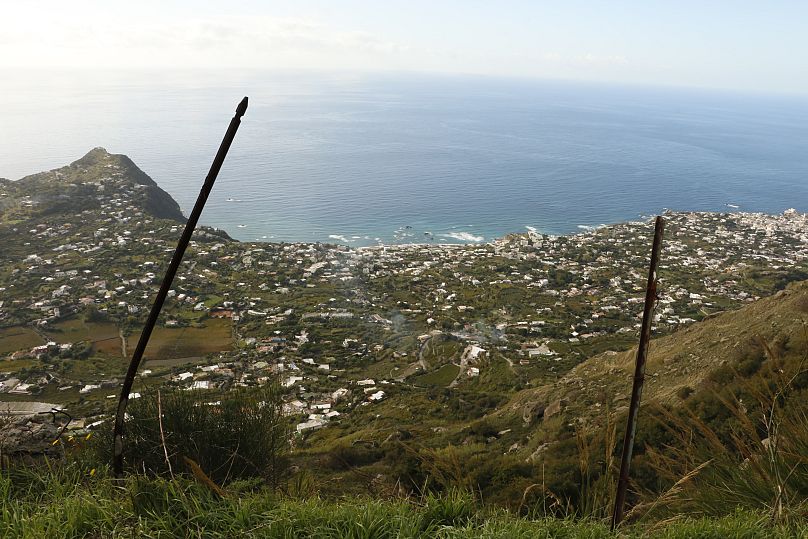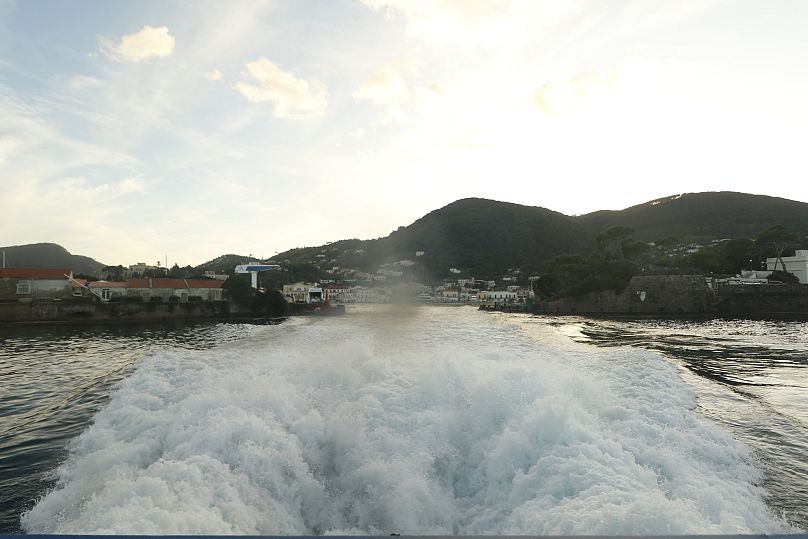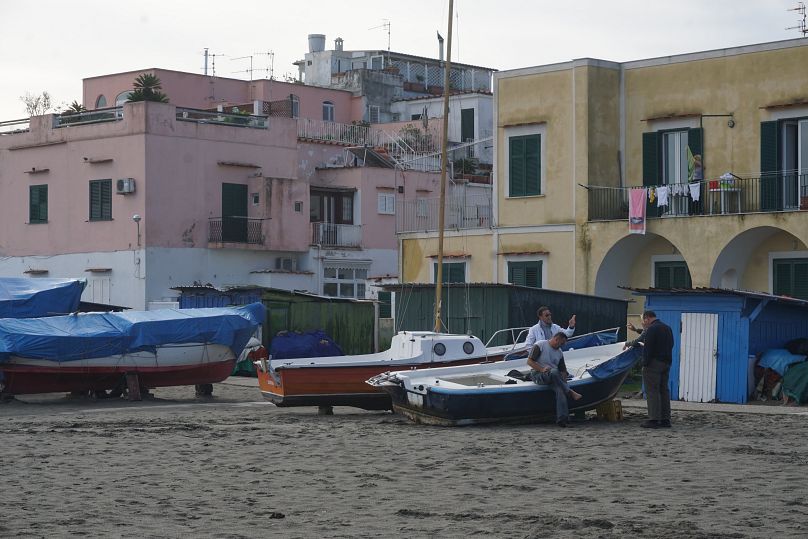A 2017 earthquake highlighted just how difficult it can be to manage an emergency on the island. That night about 20,000 people — locals and tourists — came to the port to be evacuated but there were not enough ferries.
It is one of the most popular destinations for tourists and one of the most famous islands in the world but its 70,000 inhabitants live under the real threat of a possible earthquake or a volcanic eruption — with no evacuation plan set up.
Ischia is one of the pearls of the Neapolitan archipelago. Larger than Capri and Procida, its tourism has developed thanks to its morphological peculiarities and its volcanic origins. Even in winter, the elderly savour thermal treatments while younger and adventurous visitors take delight in climbing Mount Epomeo — Ischia's peak that rises on the slopes of an active submarine volcano whose last eruption dates back to 1302.
Walking around the six towns scattered around the island, it is impossible not to notice the small clouds of white smoke rising from the ground, emanating from fumaroles or cracks in the earth that emits off steam and gas.
"Ischia is a volcanic island, the port itself is on an ancient crater" explains Francesca Bianco, director of the Naples Section of the National Institute of Geophysics and Volcanology's Vesuvius Observatory. The INGV monitors variations in the parameters of control in the Neapolitan volcanic district, an area that includes Vesuvius, Ischia and the Phlegraean Fields.
"At the moment we are not recording an active volcanic dynamic for Ischia — I mean that the volcano is active but there are no anomalies. Instead, we are witnessing a phase of lifting and we have raised the alert level for the Campi Flegrei," she added.
'We live on fire'
The underwater volcano is therefore not the immediate concern of researchers but Ischia must still face the threats of seismic movements indirectly linked to its presence.
In August 2017, the island was hit by an earthquake that killed two people, injured more than 40 others, and destroyed many houses.
"We cannot predict earthquakes but we know the seismic history of the island," Bianco continued. "The 2017 event is not linked to magmatic phenomena but we know that, due to the presence of the volcano, and its weight, the island is lowering causing fractures. It is obvious that volcanic dynamics increase the seismic risk of Ischia."
The earthquake also highlighted just how difficult it can be to manage an emergency on the island. That night about 20,000 people — locals and tourists — came to the port to be evacuated but there were not enough ferries.
Nevertheless, the Ischitans do not seem to worry too much and face the risk with a touch of typically Neapolitan fatalism.
"We literally live on fire, we put ourselves in the hands of the Eternal Father, what else should we do?" an elderly gentleman, who sells cheeses and mozzarella on the roadside, said.
"You see, we are surrounded by the sea, where should we go? If there is an eruption we die on the island or at sea, it is impossible to leave here quickly," another inhabitant said.
'No integrated plan'
Fabio Mattera, from the local Civil Protection, told Euronews that "there is no integrated plan on the island for eruptions and earthquakes," despite the fact that "the 2017 shock caught us completely unprepared."
"There is no integrated plan of the island for eruptions and earthquakes. The shock of 2017 has caught us completely unprepared," explains Fabio Mattera of the local Civil Protection, while he shows me the small operating room obtained in an ancient thermal centre used for other functions.
"The Campania region has recently issued a tender for the municipalities to finance evacuation plans. Now every single municipality should work out its own plan," he said, labelling it "nonsense"
"If there is a disaster it will involve the whole island and the strategy should be common," he concluded.
Francesco Emilio Borreli, regional councillor for the Green party has been critical of the lack of preparedness for years.
"The three areas observed by the INGV are very urbanised," he flagged. "Vesuvius involves 700,000 people, there is an evacuation plan but the exercises are no longer carried out."
"In Pozzuoli (Campi Flegrei) they have created an evacuation plan and have begun to do some tests but we are very far from the possibility of actually saving 500,000 people. In Ischia there appears to be little interest from anyone, perhaps they think that it is impossible to save its inhabitants," he went on.
Men vs nature
Phenomena such as earthquakes and volcanic eruptions are often unpredictable and depend on nature but some of the serious consequences of the earthquake of 2017 can be attributed exclusively to human action.
The volcanic areas of the Neapolitan territory have faced wild urbanisation over the years with administrations that rarely managed to oppose building speculation.
Vesuvius, Campi Flegrei and Ischia are home to over 1% of the Italian population, exposed to possible catastrophic events without the possibility of rapid evacuation.
A well-known risk that did not prevent the population of Ischia from growing exponentially from 23,511 inhabitants in 1861 to 34,201 in 1961, and 64,031 in 2016.
Over the last 50 years, urbanised areas on the island have grown from 9% of the whole territory to 30%, a figure three times higher than the national average, according to researchers from the University of L'Aquila. Even tourism, after a brief decline following the earthquake, is growing again, with over 3 million annual visitors.
"There are dozens of magnitude 4 earthquakes in Italy. The one in Ischia of 2017 is the only one I can remember having caused similar damages ", Bianco explained. "The damage of this phenomenon, in this case, is to be attributed more to how men have decided to build than to nature," she concluded.
'Single municipality'
For Borelli, the situation is "really deadly".
"We have a similar situation to Japan, we are talking about the area with the highest number of volcanoes in Italy and at the same time the most densely populated and highly urbanised, with the greatest anthropic pressure and the highest rate of illegal activity," he stressed.
"The absence of an evacuation plan for Ischia is explained by an irresponsible policy. Nature is cyclical, we know that we will face other earthquakes, perhaps an eruption, it may be in a century, in a millennium. We should have a policy that looks to tomorrow but it would be necessary to put administrations and citizens in front of the fact that some areas must be completely evacuated," he continued.
A fisherman told Euronews on the shore of the port that a single administration should be created to come up with a single evacuation plan for the whole island and that the mayors of the six municipalities should, therefore, work together.
"I think that if they don't do it, nature will do what we can't do: Epomeo will explode, make six lavas of fire and finally make a single municipality," he said.














